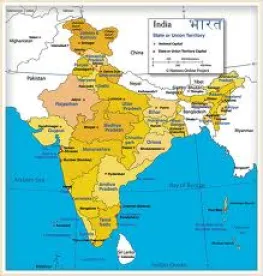Prime Minister Modi’s visit to the United States, set to start in New York on Friday, September 26th, is pregnant with expectation — though a number wonder if the Prime Minister’s PR machine is in overdrive. The Prime Minister’s visit is not just hype; it will be both symbolic and substantive. Modi’s message to the United States: “India is Open for Business.” Modi’s primary objective: boost the India-US annual bilateral trade above the current $150 billion. Modi’s audience: the U.S. business community.
Prime Minister Modi’s address to the United Nations General Assembly and his message to the India-American community at Madison Square Garden are equally important different reasons. After 3+ years of missteps and meanderings by the GoI, the address at the U.N. offers the stage on which Modi reasserts India’s place on the global community. The address at Madison Square Garden allows Modi to highlight the success and contributions of the India community to the U.S. and to affirm the unique bonds between India and the U.S. In both instances, in different ways, Modi will drive his message of economic growth and development, effective governance, and the elimination of poverty.
The launch of Modi’s “Make in India” campaign previews the message for the U.S. visit. Modi rightfully understands that U.S. business wrestles with the Asia problematic, and he correctly plays to India’s strength of “being the only country in the world that has the power of democracy, demographic dividend and demand.”
He also understands the need to restore trust in the government — a trust in consistent laws consistently and fairly applied. To be sure, U.S. businesses will take a wait and see attitude, but it is noteworthy that the Prime Minister made this a point of public discourse. Two weeks ago in New Delhi, on the sidelines of the Second Annual Covington and Tatva Legal Defense Industry event, the conversations that Indian business people had with me were filled with confidence in the Modi led government, particularly Modi’s ability to correct the glaring defects in the bureaucratic morass. Their conversations with me reflected ambitious expectations for the future. We can wait and see, but we should not be surprised if success follows.
The ticket for admission? FDI — “First Develop India.” The fact that the Prime Minister focuses on developing manufacturing in India should come as no surprise. He rightfully understands that India’s economic success — and his political success — is linked to creating opportunities for employment in India and increasing the purchasing power of a broad base of Indian families. And this will benefit U.S. industry as well.
So, who in the U.S. business community stands to benefit? Many. But it is noteworthy that Lockheed Martin’s Phil Shaw was included as a speaker at Modi’s “Make in India” event on Thursday — right up there with icons of India industry. The Defense Industry opportunity is a win-win-win for India and the U.S. for it satisfies multiple requirements: manufacturing in India; participating in a global supply chain; a significant market for U.S. defense companies; India’s security needs in a difficult neighborhood; to name a few.
The U.S. is an important strategic partner to India. Prime Minister Modi’s message that “India is Open for Business” creates the opportunity both to strengthen the relationship and to address India’s needs and requirements. It will be interesting to see how Modi elaborates on this message to his audience in India and the U.S. during his various meetings in New York and Washington, DC.
CNN-IBN’s Anubha Bhosle talked to Indian-American entrepreneurs and Covington’s Ralph Voltmer about Indian Prime Minister Narendra Modi’s five-day visit to the United States and the impact of the visit on the corporate sector. To watch the interview, which took place at Covington & Burling’s Washington, D.C. headquarters click here.




 />i
/>i

